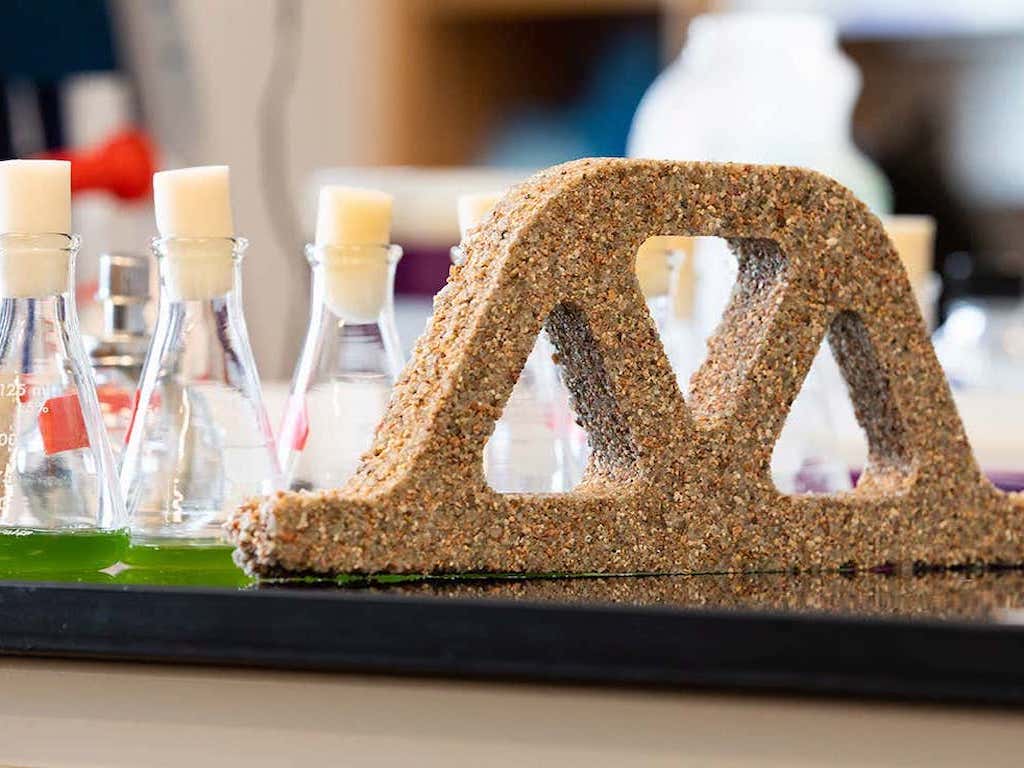3 Mins Read
Could high-rise buildings in carbon-neutral economy cities of the future be grown and self-repaired by living bacteria and adapt to the natural environment? New research by scientists who are using cells to create sustainable building materials is revealing that this might just be possible. As global heating continues to intensify, innovative developments such as these will be vital solutions to allow us to adapt and survive the challenges of a climate-stricken world.
Together with other scientists in biochemistry, microbiology, materials science and structural engineering, the a team at the University of Colorado Boulder College of Engineering & Applied Science’s Living Materials Laboratory are engineering bacteria to create minerals and polymers that form living building blocks. In their newly published study in the journal Cell Matter, the researchers used photosynthetic cyanobacteria to grow a living structural building material.
Conventional building materials such as concrete require high water use, cement and spews out massive amounts of greenhouse gas emissions in the manufacturing process – as much as 7% of the total carbon output, according to the International Energy Agency (IEA). When we add the transportation and assembly of global building materials, the figure rises to about 11% of global carbon emissions.
By contrast, living building materials could be far less resource-intensive to produce, and even carbon-positive. Cyanobacteria absorbs carbon dioxide and uses sunlight to grow, and in the right conditions, it forms a biocement that helps bind sand particles together to make bricks. Keeping the cyano bacteria alive, the researchers found that one cyanobacteria brick can be split and grown into two bricks from each half.
These results follow their study published in Scientific Reports last year, where researchers proved that limestone particles could be created by genetically programming E. coli bacteria. Using genetic programming, they were also able to produce styrene, the chemical particle used to make styrofoam, using the same bacteria.
Though the technology behind engineered living materials remains in its infancy, these findings present a possible solution to unsustainable urban development – especially given that 100 cities in the world can account for 20% of the global carbon footprint.
Commenting on the potential of the field, Wil Srubar, the lead researcher of the Living Materials Laboratory believes that “synthetic biology and engineered living materials will play a critical role in tackling the challenges humans will face in the 2020s and beyond: climate change, disaster resilience, ageing and overburdened infrastructure.”
Elsewhere, a joint study between Yale University and the Potsdam Institute for Climate Impact Research has found that wood-based engineered materials could too help to slash carbon emissions. According to the scientists, instead of using carbon-intensive materials such as concrete, engineered timber could be used to construct buildings that will act as a “carbon bank” and should be considered among governmental climate mitigation measures.
Researchers in Asia are also looking at greener building solutions. Civil engineering students from the University of the Philippines, for instance, have recently developed a more sustainable version of concrete made from recycled fly ash and waste glass, and the locally abundant rock pozzolanic tuff.
Lead image courtesy of The University of Colorado Boulder College of Engineering & Applied Science.




